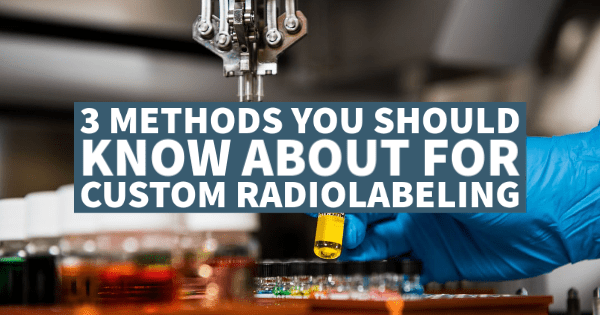
In the United States, there are approximately 810,000 people that work at chemical companies. That number includes those who are in the pharmaceutical sector. Custom radiolabeling is an important part of the work that's done in creating new pharmaceuticals. When it comes to custom radiolabeling compounds, there are a variety of methods that can be used. Here are a few of the methods that can be helpful for preclinical or clinical studies.
Tritium labeling
Tritium labeling is a method used to label small molecules at moderate specific activities. The method is adequate for a majority of receptor binding assays. A client would have to provide an appropriate precursor in order for it to be successful. There are different in-house approaches such as reducing a ketone to an alcohol through the use of sodium borotritide and N- or O-methylation with tritiated methyliodide. As a low beta energy emitter, Tritium can be used to label nucleic acids, drugs, proteins, and other organic biomolecules.
Carbon-14 labeling
In a scenario involving drug development for the purpose of doing ADME studies in clinical trials, C-14 labeling is the option typically used. In some radiolabeled compounds, tritium exchange has the potential of occurring. With C-14 labeling, exchange does not occur, which is what sometimes makes it a more preferred option. The half-life of Carbon-14 is 5,730+40 years. Among the common applications it is used for include drug tests and radiometric dating.
Phosphorus labeling
There are two types of phosphorus labeling that can be used. Phosphorus-32 is primarily for labeling phosphoproteins and nucleic acids. Among all of the commonly researched radioisotopes, Phosphorus-32 has the highest emission energy. That makes it suitable for experiments where sensitivity is the highest priority. Examples include footprinting experiments and titrations that have very strong interactions. The disadvantage of using Phosphorus-32 is it requires a variety of engineering controls due to its high energy. Phosphorus-33 labeling is another option for labeling nucleotides. It has less energy than P-32, which means it won’t have to be protected with plexi glass.
Radiolabeling compounds is a critical component to developing new pharmaceuticals. These are among some of the more common methods used to do custom radiolabeling. Choosing a suitable method will depend on what you’re labeling and what you’re trying to accomplish in your clinical study.
